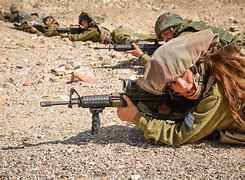
Marking a significant step towards gender equality, the U.S. military has progressively integrated women into combat roles.

This shift, initially met with controversy, is now widely recognized as a path to inclusivity.

The pivotal change commenced with a 2015 announcement that echoed through the halls of the Pentagon, officially ending the ban on women serving in combat roles.

The directive set a clear path: by January 1, 2016, women were eligible to serve in all military occupational specialties (MOS) and Army units across the total force.

Amidst this progressive leap, the Marine Corps released a year-long study that placed a spotlight on the realities of gender integration in combat roles.

The study, directed by Paul Johnson, revealed that “In 93 out of 134 tasks that we tested across the MOSs, the all-male groups outperformed the integrated groups.”

Colonel Anne Weinberg, involved in leading the study, mentioned, “There are opportunities to train and become stronger and to be able to complete these tasks in a faster and more lethal manner.”

This optimistic outlook signifies an underlying belief that with rigorous training and time, women can close the performance gap in combat roles.

As the doors to all-male combat units creaked open for women, the Army took the lead in this groundbreaking endeavor.

According to Maj. Gen. Howard Bromberg, Army G-1, the Army’s plan involved first opening units to women to serve in MOSs that were already coeducational.

Beyond the ground forces, the Navy made headway by integrating women into submarines, previously an all-male bastion.

The Air Force, with the highest female representation among the branches, updated its song to reflect this new era of gender neutrality.

Meanwhile, the Marine Corps, which had requested an exception to the gender integration policy—later denied—continued to face challenges in fully integrating women into its ranks.

Special operations forces have been particularly resistant to gender integration, with high attrition rates and cultural barriers limiting success.

Yet, the military remains resolute in its efforts to level the playing field, with the Air Force establishing the 330th Special Warfare Recruiting Squadron to recruit capable candidates for its elite units.
Relevant articles:
– Marine Corps Releases Results Of Study On Women In Combat Units, NPR
– Ground Combat Units’ New Addition: Women?, The National Interest
– Women in Combat: Five-Year Status Update, Center for a New American Security
– Army describes plans for integrating women into combat, Army.mil
